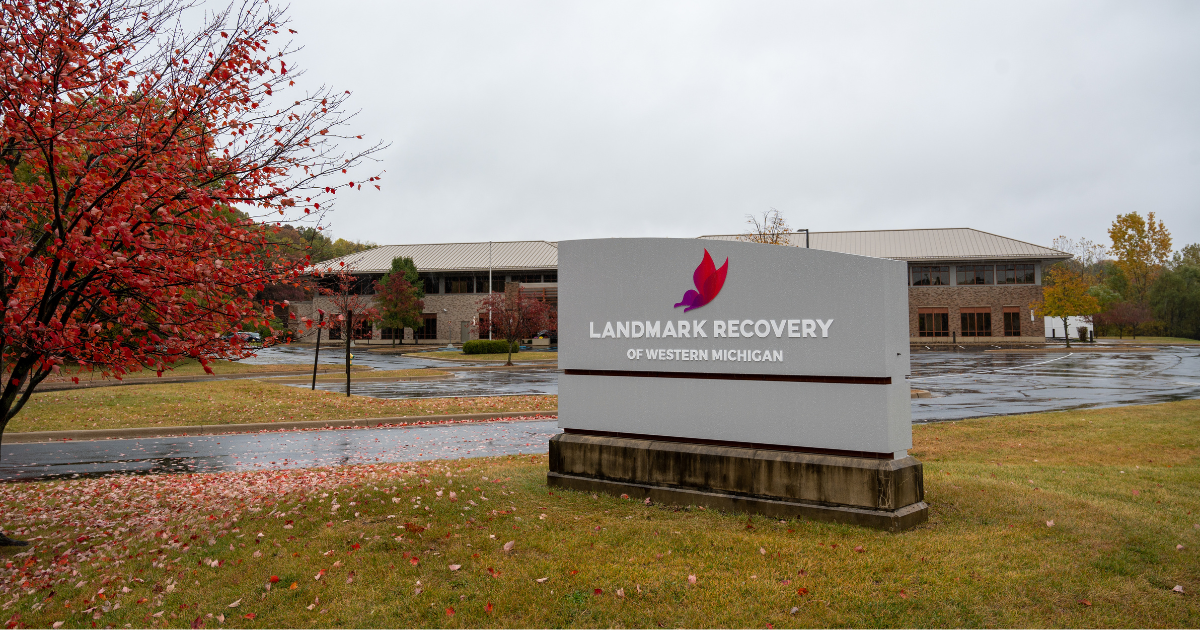According to the NIAAA, millions of people deal with alcohol use problems, meaning that millions suffer and don’t get the treatment that they require, including help from medication-assisted treatment such as disulfiram or acamprosate.
Alcohol use disorder is something that affects over 15 million people in the United States. Moreover, almost 90,000 people die from alcohol-related causes each year, making it one of the leading causes of preventable death in the country. Alcohol is a substance that affects nearly every organ in the body.
Alcohol abuse can lead to liver cirrhosis, kidney problems, and multiple different types of cancer, and these are just the long-term effects. When you factor in that alcohol leads to short-term lapses in judgement and memory that can cause harmful and dangerous situations, the problems associated with alcohol abuse become more clear.
However, treatment and getting help is always an option. One method used by alcohol treatment centers is medication-assisted treatment, or MAT. The use of certain forms of MAT such as disulfiram and acamprosate can help a patient deal with the initial problems related to sobriety and withdrawal. Learning more about these types of MAT can help prepare you or your loved one as your begin to search for treatment options.
What Is Disulfiram?
Disulfiram, like other forms of alcohol use disorder MAT, is used to treat chronic alcoholism.
Disulfiram will cause unpleasant effects when even small amounts of alcohol are consumed. The effects associated with the drug include flushing of the face, headache, nausea, vomiting, chest pain, weakness, blurred vision, mental confusion, sweating, choking, breathing difficulty, and anxiety. Effects will begin about 10 minutes after alcohol enters the body and will last for an hour or more.
It should be noted that disulfiram is not a cure for alcohol, it only works to discourage drinking. Disulfiram is effective, according to SAMHSA, multiple studies point that disulfiram is effective in prevention and limitation of relapse to alcohol.
It should be noted that disulfiram is not often recommended as the first line of medication for someone diagnosed with alcohol use disorder. Instead, it is reserved for those who have failed one or more courses of treatment but are still motivated to achieve abstinence and sobriety.
With the advent of other forms of MAT such as acamprosate and naltrexone, there has been a decline in the use of disulfiram. Despite this, there is still evidence that disulfiram can be an effective form of treatment for those dealing with alcohol use disorder. Because of this, anyone who deals with alcohol abuse or treatment, should be aware of disulfiram and the potential benefits that it can provide.
Disulfiram comes in tablets that you take orally. It should be taken once a day. Do not take more or less of it or take it more often than prescribed by your doctor. It is important to understand that Disulfiram is supposed to deter drinking, but does not affect a person’s desire to drink alcohol.
One study published in the American Journal of Medicine found that disulfiram is effective in reducing the frequency of alcohol consumption. The drug may be effective in reducing short-term alcohol consumption.
Disulfiram is a medication that has been available and approved by the Food and Drug Administration in the country for more than 65 years. It should be noted that disulfiram is something that should be used as a complementary agent along with other pharmaceutical medications and therapeutic services.
Safety Concerns
Despite how effective disulfiram can be, it is important to understand some safety issues associated with using the medication. Safety concerns for the medication are one of the reasons that the drug has seen its use decrease in the recent past. For example, disulfiram is known to cause hepatitis which can be fatal. According to one study, disulfiram-induced fatal hepatitis is one case in every 30,000 patients treated per year. As you can see, this is an incredibly rare occurrence, however, patients taking disulfiram should be in regular contact with a physician.
What Is Acamprosate?
Acamprosate was the third medication, after disulfiram and naltrexone, to receive FDA approval for maintenance of alcohol abstinence. Acamprosate is a relatively new medication and was not approved by the FDA until July 2004.
The exact method of action by acamprosate is still under investigation, however the medication seems to work by promoting balance between different neurotransmitters and reducing withdrawal-associated distress.
There is considerable evidence that acamprosate helps in supporting treatment of alcohol use disorders. Studies have found that using acamprosate is significantly more effective than a placebo in reducing drinking days. Similarly, an analysis of 12 studies found that acamprosate increased the continuous abstinence rate and doubles continuous abstinence duration compared with a placebo.
Acamprosate is generally started five days after drinking cessation.
Safety
Acamprosate has a good safety profile. In fact, patients who used acamprosate found that they did not develop a tolerance or dependence on the medication and that it does not appear to have potential for abuse. The medication also carries virtually no overdose risk and most side effects are mild and disappear within the first few weeks of treatment.
The most common side effects associated with acamprosate is diarrhea and less common side effects include intestinal cramps, headache, insomnia, anxiety, muscle weakness, and dizziness.
One of the best things about acamprosate is that it is not metabolized in the liver meaning that it can be used safely even by patients with severe liver disease, unlike naltrexone or disulfiram.
Moreover, there are no clinically significant interactions between acamprosate and other medications, this means that you can use acamprosate along with other medications.
What Is Naltrexone?
Naltrexone is a medication that blocks the effects of certain drugs such as opiates, narcotics, and alcohol. It works by attaching to the receptors in the brain that these types of drugs would normally attach to. Essentially it blocks opioids and other drugs from attaching to these receptors and doesn’t give the user the expected effects of the drug. Naltrexone has the following kinds of effects:
- Naltrexone can reduce a patient’s urge or desire to drink
- Naltrexone helps patients remain abstinent from alcohol
- It can interfere with a patient’s desire to continue drinking more if they relapse
In general when a patient that is on naltrexone drinks alcohol it will not reduce the effects that impair coordination and judgement. It will, however, reduce the feelings of intoxication and reduce the desire for someone to drink. A person would experience no psychological effects and would not feel either “high” or “down” from alcohol use.
Some of the common side effects that occur from naltrexone include:
- Nausea
- Headache
- Depression
- Dizziness
- Fatigue
- Insomnia
- Anxiety
- Sleepiness and more
These side effects generally are mild and are of short duration ad patients will usually report that they are normally unaware of being on naltrexone.
Vivitrol
The most common type of naltrexone that is used is Vivitrol. Vivitrol can be used for both opioid and alcohol dependence. Vivitrol is a non-addictive, once-monthly treatment that is proven to help reduce heavy drinking in patients who are alcohol dependent. Again, this, and all other forms of MAT, should be used alongside counseling to help reinforce recovery and promote long-term sobriety. The effectiveness of Vivitrol has been measured and over a six-month placebo-controlled study it was found that Vivitrol and counseling led to a 25 percent greater reduction in days of heavy drinking that those treated with a placebo and counseling.
Moreover, a group of patients who abstained from drinking a week prior to their first dose of Vivitrol and counseling experienced 92 percent fewer heavy-drinking days and more abstinent days per month.
Benefits of Medication-Assisted Treatment
When it comes to treating addiction and substance use disorders, there is much debate in the industry about the effectiveness and ethics surrounding using medication-assisted treatment. Whether it is opioid or alcohol use disorder, there are many MAT options available for treatment facilities to use, but how effective are they?
MAT relies on the use of pharmacological medications to treat substance use disorders. Neurobiological changes that can occur during extended substance abuse can increase the risk of relapse, this is where MAT comes in. MAT can be used to help prevent relapse and promote long periods of abstinence.
The ultimate and final goal of MAT is full recovery. According to SAMHSA, the MAT approach to drug and alcohol rehab has been shown to:
- Improve patient survival
- Increase time in treatment
- Decrease illicit opioid use
- Decrease criminal activity
- Increase a patient’s ability to gain employment and more
The National Institute on Drug Abuse has gathered a number of statistics on the specific benefits of medication-assisted treatment and how it can help someone who is trying to kick their drug or alcohol use disorder.
For example, after buprenorphine became available in Baltimore, heroin overdose deaths decreased by nearly 40 percent.
Despite how helpful MAT can be, there is still a rift in the treatment community regarding its use. This problem leads to medication-assisted treatment not being widely available in many substance use disorder treatment programs. In fact, NIDA estimates that less than half of all privately-funded treatment programs offer MAT and only about a third of patients at these program receive it.
If medication-assisted treatment were to become more a priority, it would work to help those who are suffering from drug or alcohol abuse.
Safety Concerns
When it comes to MAT the most important thing is to make sure that patients are eventually taken off all substances. Too often MAT is used in placement of someone’s previous substance use. In fact, many forms of MAT are addictive and can be habit-forming. For example, methadone is one of the most widely used forms of MAT and while it can be effective in helping someone get past their substance use disorder, it can also lead to addiction and even overdose.
Moreover, it is incredibly important to be sure that MAT is not used alone. Be sure treatment consists of multiple other aspects besides MAT, including group counseling sessions and one-on-one individual therapy. MAT is supposed to be something that helps a patient overcome the initial symptoms of withdrawal and help wean them off of the substances that they are dealing with. To work best, patients should be exposed to a number of different types of counseling and therapy sessions to help them learn the different processes of drug and alcohol addiction and learn methods to help them deal with relapse pressures.
Cognitive Behavioral Therapy
One of the most common forms of therapy that is used in a drug and alcohol treatment setting is cognitive behavioral therapy (CBT). During CBT patients will work with therapists to identify and dismantle the triggers that lead them toward drugs or alcohol. Together the patient and practitioner will learn to replace negative modes of thinking with positive ones and replace triggers that they face with healthier activities such as exercise, art, or something else.
Next Steps
Alcohol abuse is a serious issue that affects millions of people around the country. Unfortunately, not everyone seeks treatment. What’s even more upsetting is the people that do seek treatment may not be getting the quality care that they deserve. For example, medication-assisted treatment is one form of rehabilitation that can help. When it comes to alcohol use disorder, some of the common forms of MAT include disulfiram, acamprosate, and more. Learning more about these specific forms of MAT can help you prepare as you look more into treatment options for your or your loved one.
Due to the prevalence of alcohol use disorder in the country, drug or alcohol treatment centers are working to become a part of the solution. One Indiana treatment center that is dedicated to providing patients with evidence-based treatment and an enhanced quality of care is Landmark Recovery. Landmark utilizes medication-assisted treatment, detoxification, inpatient, and intensive outpatient to make sure that patients have access to all the tools that they need to help them achieve long-term sobriety. If you are interested in learning more about what Landmark can offer, please visit our website and reach out to our admissions team today.

Choose Recovery Over Addiction
We're here 24/7 to help you get the care you need to live life on your terms, without drugs or alcohol. Talk to our recovery specialists today and learn about our integrated treatment programs.




